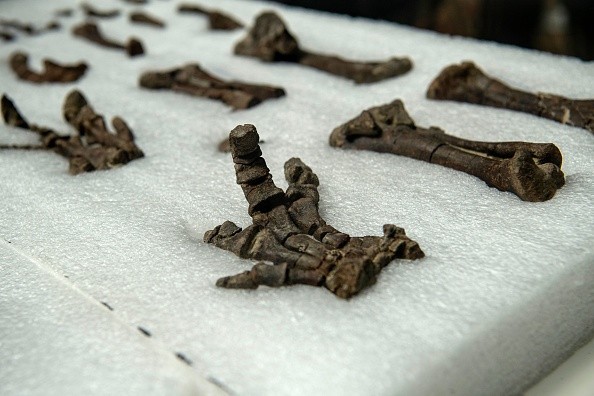Two new species of ancient birds that lived alongside dinosaurs have been unearthed near the Great Wall of China.
One of the newly discovered species has a sensitive, moveable bone appendage at the tip of its lower jaw, which it may have used to find food.
New Mesozoic bird found in China

Paleontologists disclosed proof of an indeed aged planet around 80 country miles from the westernmost stretch of China's Great Wall.
Over the previous two decades, teams of researchers have uncovered over 100 examples of fossil birds that lived around 120 million years ago, during the dinosaur era.
Many of these fossils, however, have been difficult to identify since they are fragmentary and often terribly crushed.
According to ScienceDaily, researchers analyzed six of these fossils and discovered two new species in a recent report published in the Journal of Systematics and Evolution.
One of the new species featured a moveable bony attachment at the tip of its lower jaw that may have assisted the bird in rooting for food.
As per Sci-News, Dr. Hai-Lu You, a paleontologist with the Chinese Academy of Sciences' Institute of Vertebrate Paleontology and Paleoanthropology and the Center for Excellence in Life and Paleoenvironment, determined that Gansus yumenensis is the world's first passed true Mesozoic bird, as Archaeopteryx is further dinosaur-alike, and we now understand what its cranium looks like after around four decades.
It's difficult to tell which fossils belong to Gansus yumenensis and which don't.
The new six Changma specimens are mostly only skulls and necks, which are not preserved in existing Gansus yumenensis specimens.
All birds are dinosaurs, but not all dinosaurs are birds; over 90 million years, a small group of dinosaurs evolved into birds that coexisted with other dinosaurs.
Modern birds are descended from the group of birds that survived the extinction that wiped out the rest of the dinosaurs, but many prehistoric birds also went extinct.
Dr. Jingmai O'Connor, a paleontologist at the Field Museum of Natural History's Negaunee Integrative Research Center, the Institute of Vertebrate Paleontology and Paleoanthropology, and the Chinese Academy of Sciences' Center for Excellence in Life and Paleoenvironment, stated that the new fossils include two new species that expand their knowledge of Cretaceous bird faunas, and they've discovered dental feature combinations that have never been seen in any other dinosaurs.
O'Connor's exploration focuses on different kinds of early birds to determine why some lasted while others came vanished.
Dr. Jerry Harris, a paleontologist in Dixie State University's Department of Earth and Environmental Sciences found the fossils that come from a site in China that has produced fossils of birds that are pretty darn close to modern birds.
However, all of the bird fossils described thus far haven't had skulls preserved with the bodies.
Gangsus is the first bird known in the Mesozoic era
Brevidentavis is not the only fossil bird identified with a predentary that may have been utilized in this manner, but its discovery, together with Meemannavis, adds to our understanding of the diversity of prehistoric birds, particularly in the Changma region.
The study also sheds light on the site's most prevalent bird, Gansus, as at least four of the other specimens analyzed are most likely of this species Hai-Lu You of IVPP stated that Gansus is the world's first witnessed real Mesozoic bird, as its Archaeopteryx is another dinosaur-resemblant, and they experience what its cranium of gansus looks like after roughly 40 years.
© 2025 NatureWorldNews.com All rights reserved. Do not reproduce without permission.





